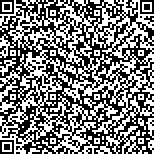| 引用本文: | 梁园,付敬强,沈铭辉,骆轩,游伟伟,柯才焕.方斑东风螺3个选育世代遗传多样性和遗传结构的微卫星分析[J].海洋科学,2022,46(10):85-93. |
| |
|
| |
|
|
| 本文已被:浏览 605次 下载 997次 |

码上扫一扫! |
|
|
| 方斑东风螺3个选育世代遗传多样性和遗传结构的微卫星分析 |
|
梁园1,2, 付敬强3,2, 沈铭辉4, 骆轩1,2, 游伟伟1,2, 柯才焕1,2
|
|
1.厦门大学 海洋与地球学院, 福建 厦门 361102;2.厦门大学 福建省海洋经济生物遗传育种重点实验室, 福建 厦门 361102;3.厦门大学 环境与生态学院, 福建 厦门 361102;4.海南省海洋与渔业科学院 海南省热带海水养殖技术重点实验室, 海南 海口 571126
|
|
| 摘要: |
| 采用12个多态性微卫星标记对方斑东风螺(Babylonia areolata)泰国选育系TF4~TF6连续3代选育群体的遗传多样性与遗传结构进行了分析。3个群体的多态信息含量分别为0.730、0.717和0.708,均高于0.5,表现出较高的多态性。平均等位基因数(A)、有效等位基因数(Ae)、观测杂合度(Ho)、期望杂合度(He)和Shannon’s信息指数(I)的变化范围分别为11.667~12.583、6.334~6.915、0.658~0.672、0.737~0.787和1.837~2.003,整体呈降低趋势,但差异并不显著(P>0.05)。分子方差分析结果显示,群体间的遗传变异仅占总变异的0.95%;群体间的遗传分化系数(Fst)介于0.00569~0.01324,处于低等分化水平(Fst<0.05)。主坐标分析和STRUCTURE分析结果显示,3个群体呈现出相似的遗传背景和遗传结构。以上研究结果表明,经过连续多代的人工选育,方斑东风螺选育群体保持着较高的遗传多样性水平,遗传变异和遗传分化水平较低,遗传结构趋于稳定,仍具有较高的遗传选育潜力。 |
| 关键词: 方斑东风螺(Babylonia areolata) 选育群体 微卫星标记 遗传多样性 遗传结构 |
| DOI:10.11759/hykx20211007003 |
| 分类号:S917.4 |
| 基金项目:海南省重点研发项目(ZDYF2022XDNY234);福建省科技计划项目高校产学合作项目(2020N5001);国家自然科学基金资助项目(32202900);海南省热带海水养殖技术重点实验室项目(TMTOF-202003) |
|
| Microsatellite analysis on genetic diversity and genetic structure of three successive selected generations of Babylonia areolata |
|
LIANG Yuan1,2, FU Jing-qiang3,2, SHEN Ming-hui4, LUO Xuan1,2, YOU Wei-wei1,2, KE Cai-huan1,2
|
|
1.College of Ocean and Earth Sciences, Xiamen University, Xiamen 361102, China;2.Fujian Key Laboratory of Genetics and Breeding of Marine Organisms, Xiamen University, Xiamen 361102, China;3.College of the Environment and Ecology, Xiamen University, Xiamen 361102, China;4.Hainan Academy of Ocean and Fisheries Sciences, Hainan Provincial Key Laboratory of Tropical Maricultural Technologies, Haikou 571126, China
|
| Abstract: |
| We analyzed the genetic diversity and genetic structure among three successive selected generations (TF4-TF6) of Babylonia areolata using 12 polymorphic microsatellite markers. Polymorphism information content (PIC) was 0.730, 0.717, and 0.708, showing relatively high polymorphisms (PIC >0.5). Additionally, number of alleles (A), effective number of alleles (Ae), observed heterozygosity (Ho), expected heterozygosity (He), and Shannon’s information index (I) ranged from 11.667 to 12.583, 6.334 to 6.915, 0.658 to 0.672, 0.737 to 0.787, and 1.837 to 2.003, respectively, suggesting an overall decreasing but not significant trend (P> 0.05). Furthermore, analysis of molecular variance (AMOVA) showed that genetic variation among generations only accounted for 0.95% of the total variation, while Fst ranged from 0.00569 to 0.01324, belonging to the low differentiation level (Fst < 0.05). Moreover, principal coordinates analysis (PCoA) and STRUCTURE analysis illustrated a similar genetic background and genetic structure among the three generations. These results suggested that the three generations maintained a high level of genetic diversity after consecutive generations of artificial breeding, with a low level of genetic variation and differentiation and a stable genetic structure. The results also indicated that a highly selective potential still existed in the breeding populations of B.areolata. |
| Key words: Babylonia areolata selective population microsatellite marker genetic diversity genetic structure |
|
|
|
|
|
|
